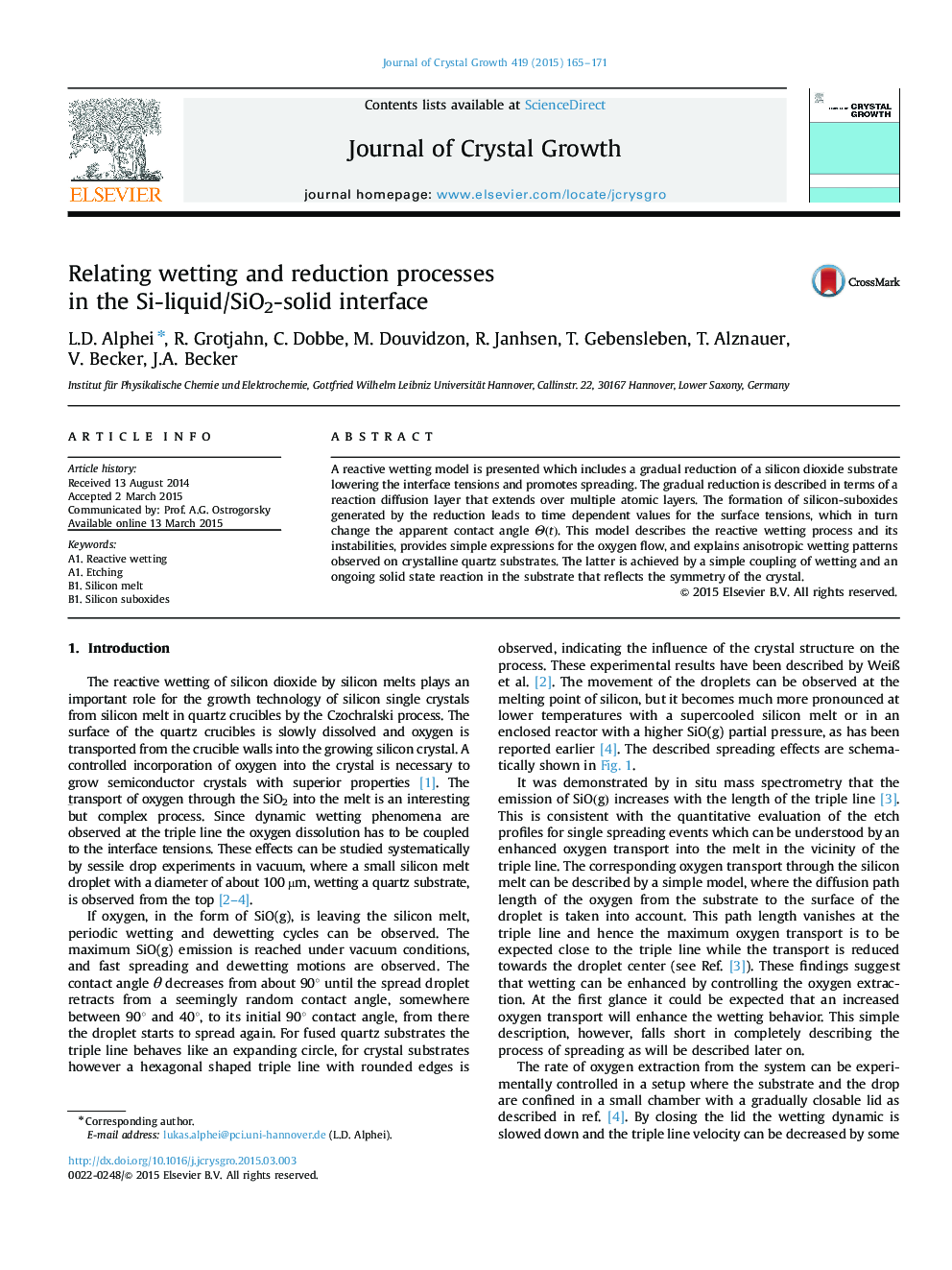| Article ID | Journal | Published Year | Pages | File Type |
|---|---|---|---|---|
| 1790078 | Journal of Crystal Growth | 2015 | 7 Pages |
•The reactive wetting of silicon melt on fused silicon dioxide is discussed.•A model for the reactions at the interface is proposed.•The wetting angle is mapped to the degree of reduction at the interface.•A reaction layer is proposed and its thickness is evaluates.•The developed model is applied to observed phenomena like droplet instabilities and anisotropic spreading behavior on crystalline substrates.
A reactive wetting model is presented which includes a gradual reduction of a silicon dioxide substrate lowering the interface tensions and promotes spreading. The gradual reduction is described in terms of a reaction diffusion layer that extends over multiple atomic layers. The formation of silicon-suboxides generated by the reduction leads to time dependent values for the surface tensions, which in turn change the apparent contact angle Θ(t)Θ(t). This model describes the reactive wetting process and its instabilities, provides simple expressions for the oxygen flow, and explains anisotropic wetting patterns observed on crystalline quartz substrates. The latter is achieved by a simple coupling of wetting and an ongoing solid state reaction in the substrate that reflects the symmetry of the crystal.
